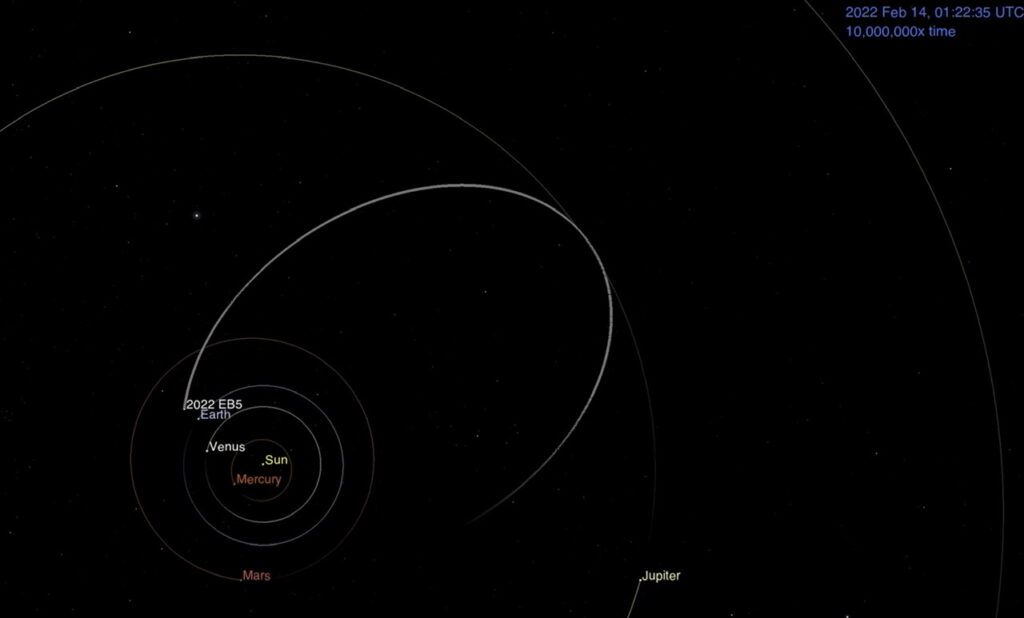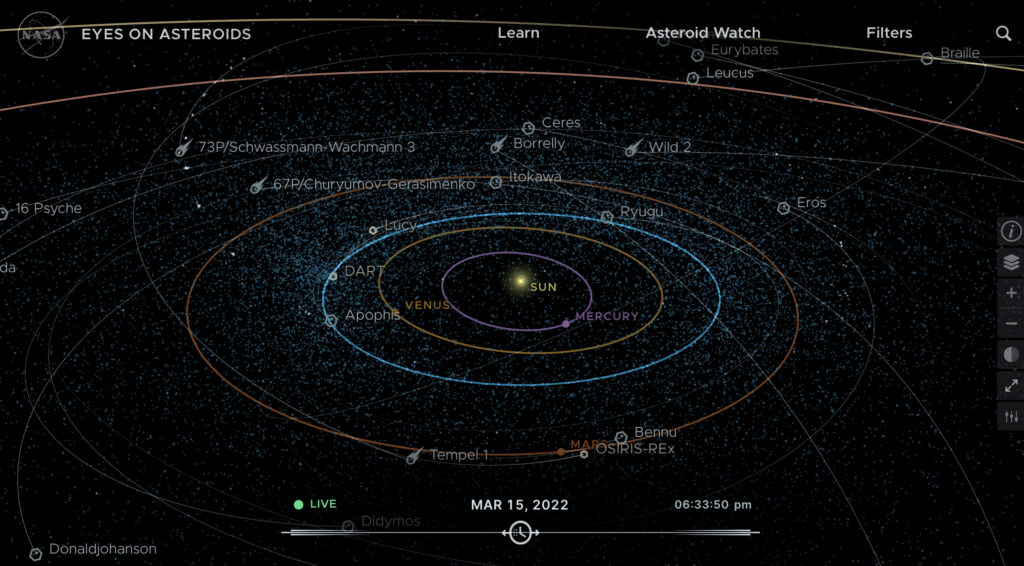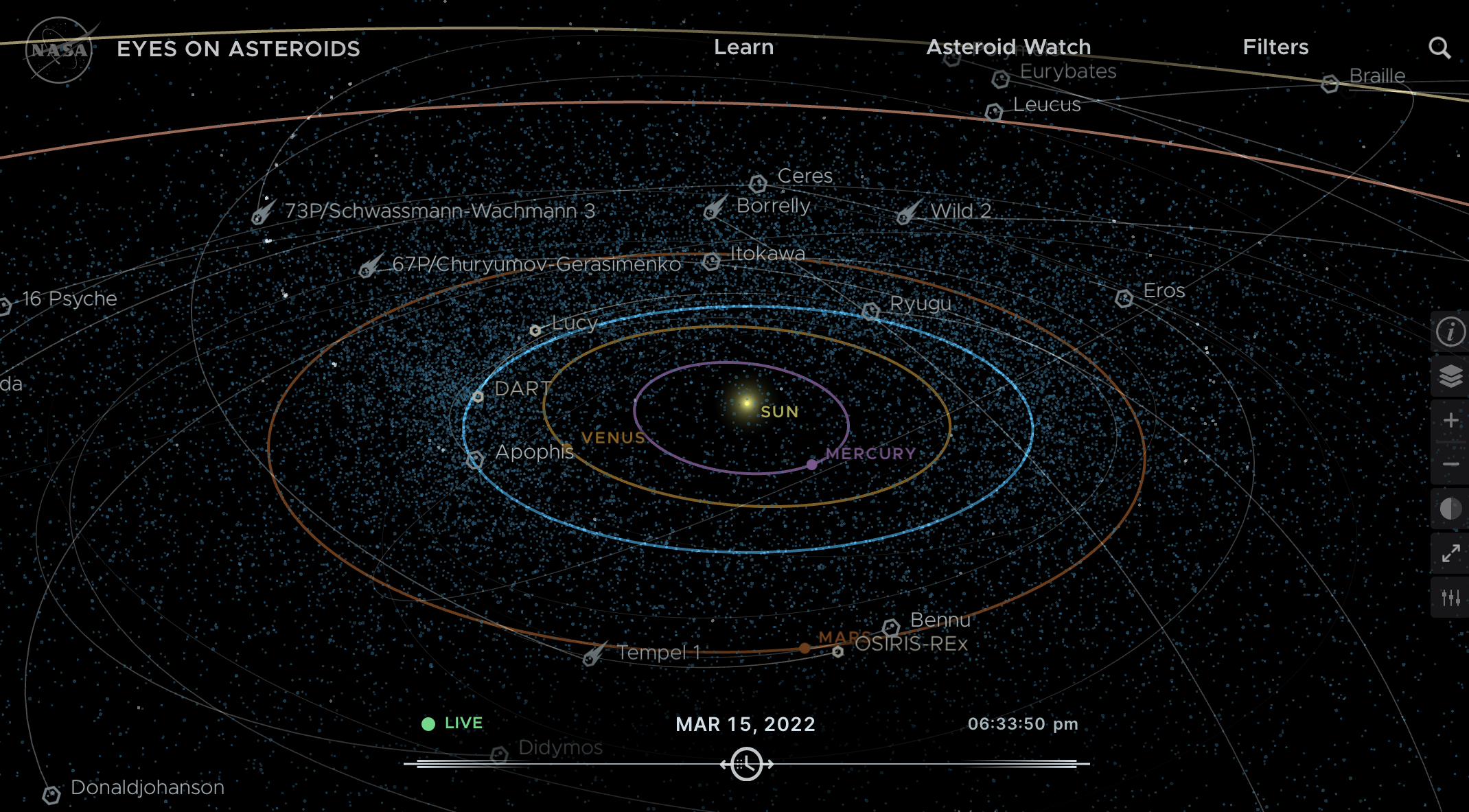*
Press release source: NASA JPL
*
Asteroid 2022 EB5 was too small to pose a hazard to Earth, but its discovery marks the fifth time that any asteroid has been observed before impacting into the atmosphere.
*
A small asteroid hit Earth’s atmosphere over the Norwegian Sea before disintegrating on March 11, 2022. But this event wasn’t a complete surprise: Astronomers knew it was on a collision course, predicting exactly where and when the impact would happen.
*
Two hours before the asteroid made impact, K. Sarneczky at the Piszkéstető Observatory in northern Hungary first reported observations of the small object to the Minor Planet Center – the internationally recognized clearinghouse for the position measurements of small celestial bodies. The object was posted on the Minor Planet Center’s Near-Earth Object Confirmation Page to flag it for additional observations that would confirm it as a previously unknown asteroid.
*
*

Credit: NASA/JPL-Caltech
*
NASA’s “Scout” impact hazard assessment system then took these early measurements to calculate the trajectory of 2022 EB5. As soon as Scout determined that 2022 EB5 was going to hit Earth’s atmosphere, the system alerted the Center for Near Earth Object Studies (CNEOS) and NASA’s Planetary Defense Coordination Office, and flagged the object on the Scout webpage to notify the near-Earth object observing community. Maintained by CNEOS at NASA’s Jet Propulsion Laboratory in Southern California, Scout automatically searches the Minor Planet Center’s database for possible new short-term impactors. CNEOS calculates every known near-Earth asteroid orbit to improve impact hazard assessments in support of the Planetary Defense Coordination Office.
*
“Scout had only 14 observations over 40 minutes from one observatory to work with when it first identified the object as an impactor. We were able to determine the possible impact locations, which initially extended from western Greenland to off the coast of Norway,” said Davide Farnocchia, a navigation engineer at JPL who developed Scout. “As more observatories tracked the asteroid, our calculations of its trajectory and impact location became more precise.”
*
*
Scout determined that 2022 EB5 would enter the atmosphere southwest of Jan Mayen, a Norwegian island nearly 300 miles (470 kilometers) off the east coast of Greenland and northeast of Iceland. At 5:23 p.m. EST (2:23 p.m. PST), 2022 EB5 hit the atmosphere as predicted by Scout, and infrasound detectors have confirmedthe impact occurred at the predicted time.
*
From observations of the asteroid as it approached Earth and the energy measured by infrasound detectors at time of impact, 2022 EB5 is estimated to have been about 6 1/2 feet (2 meters) in size. Tiny asteroids of this size get bright enough to be detected only in the last few hours before their impact (or before they make a very close approach to Earth). They are much smaller than the objects that the Planetary Defense Coordination Office is tasked by NASA with detecting and warning about.
*
“Tiny asteroids like 2022 EB5 are numerous, and they impact into the atmosphere quite frequently – roughly every 10 months or so,” said Paul Chodas, the director of CNEOS at JPL. “But very few of these asteroids have actually been detected in space and observed extensively prior to impact, basically because they are very faint until the last few hours, and a survey telescope has to observe just the right spot of sky at the right time for one to be detected.”
*

*
A larger asteroid with hazardous impact potential would be discovered much farther from Earth. NASA’s goal is to keep track of such asteroids and to calculate their trajectories in order to have many years’ notice ahead of a potential impact should one ever be identified. But this real-world event with a very small asteroid allowed the planetary defense community to exercise capabilities and gave some confidence that the impact prediction models at CNEOS are highly capable of informing the response to the potential impact of a larger object.
*
2022 EB5 is only the fifth small asteroid to be detected in space before hitting Earth’s atmosphere. The first asteroid to be discovered and tracked well before hitting Earth was 2008 TC3, which entered the atmosphere over Sudan and broke up in October 2008. That 13-foot-wide (4-meter-wide) asteroid scattered hundreds of small meteorites over the Nubian Desert. As surveys become more sophisticated and sensitive, more of these harmless objects will be detected before entering the atmosphere.
*
More information about CNEOS, asteroids, and near-Earth objects can be found at:
and
https://www.jpl.nasa.gov/asteroid-watch
For more information about NASA’s Planetary Defense Coordination Office, visit:
https://www.nasa.gov/planetarydefense
For asteroid and comet news and updates, follow @AsteroidWatch on Twitter.
*


